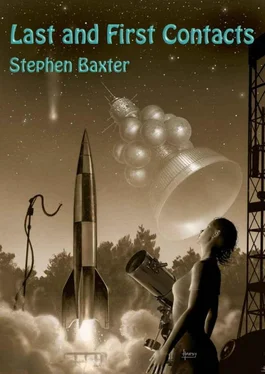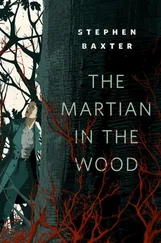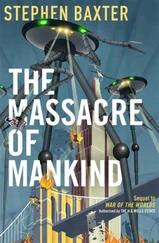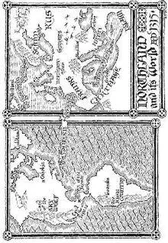Stephen Baxter - Last and First Contacts
Здесь есть возможность читать онлайн «Stephen Baxter - Last and First Contacts» весь текст электронной книги совершенно бесплатно (целиком полную версию без сокращений). В некоторых случаях можно слушать аудио, скачать через торрент в формате fb2 и присутствует краткое содержание. Город: London, Год выпуска: 2012, ISBN: 2012, Издательство: NewCon Press, Жанр: Фантастика и фэнтези, на английском языке. Описание произведения, (предисловие) а так же отзывы посетителей доступны на портале библиотеки ЛибКат.
- Название:Last and First Contacts
- Автор:
- Издательство:NewCon Press
- Жанр:
- Год:2012
- Город:London
- ISBN:978-1-907069-40-6
- Рейтинг книги:5 / 5. Голосов: 1
-
Избранное:Добавить в избранное
- Отзывы:
-
Ваша оценка:
- 100
- 1
- 2
- 3
- 4
- 5
Last and First Contacts: краткое содержание, описание и аннотация
Предлагаем к чтению аннотацию, описание, краткое содержание или предисловие (зависит от того, что написал сам автор книги «Last and First Contacts»). Если вы не нашли необходимую информацию о книге — напишите в комментариях, мы постараемся отыскать её.
Last and First Contacts
Last and First Contacts — читать онлайн бесплатно полную книгу (весь текст) целиком
Ниже представлен текст книги, разбитый по страницам. Система сохранения места последней прочитанной страницы, позволяет с удобством читать онлайн бесплатно книгу «Last and First Contacts», без необходимости каждый раз заново искать на чём Вы остановились. Поставьте закладку, и сможете в любой момент перейти на страницу, на которой закончили чтение.
Интервал:
Закладка:
But the boy standing on the eroded-flat ground was barely changed from his unimaginably remote ancestors, from Tura and Cale and Urlu and even Jaal. It had never been necessary for humans to evolve significantly, for they always adjusted their environment so they didn’t have to – and in the process stifled evolutionary innovation.
It was like this everywhere. After the emergence of intelligence, the story of any biosphere tended to get a lot simpler. It was a major reason for the silence of the stars.
But on Earth a long story was ending. In not many generations from now, Ruul’s descendants would succumb; quietly baked in their desiccating caves, they would not suffer. Life would go on, as archaic thermophilic microbes spread their gaudy colours across the land. But man would be gone, leaving sandstone strata nearly a billion years deep full of hearths and chipped stones and human bones.
‘Ruul! Ruul! Oh, there you are!’ His mother, caked by red dust, was clambering stiffly out of the chimney. ‘Somebody said you came this way. I’ve been frantic. Oh, Ruul – what are you doing?’
Ruul spread his hands, unable to explain. He didn’t want to upset his mother, but he was excited by his discoveries. ‘Look what I found, mother!’
‘What?’
He babbled excitedly about hearths and tools and bones. ‘Maybe people lived here in great heaps, and the smoke of their fires rose up to the sky. Mother, will we come to live here again?’
‘Perhaps one day,’ his mother said at random, to hush him.
But that wasn’t answer enough for Ruul. Restless, curious, he glanced around once more at the plain, the rising sun. To him, this terminal Earth was a place of wonder. He longed to explore. ‘Let me go on. Just a little further!’
‘No,’ his mother said gently. ‘The adventure’s over. It’s time to go. Come now.’ And she put her arm around his shoulders, and led him home.
The Pacific Mystery
[Editor’s note: The saga of the return of the aerial battleship Reichsmarschall des Grossdeutschen Reiches Hermann Goering to London’s sky, and of the heroic exploits of a joint team of RAF and Luftwaffe personnel in boarding the hulk of the schlachtschiff , has overshadowed the story of what befell her long-dead crew, and what they discovered during their attempted Pacific crossing – inasmuch as their discoveries are understood at all. Hence, with the agreement of the family, the BBC has decided to release the following edited transcript of the private diary kept onboard by journalist Bliss Stirling. Miss Stirling completed the Mathematical Tripos at Girton College, Cambridge, and during her National Service in the RAF served in the Photographic Reconnaissance Unit. For some years she was employed as a cartographer by the Reich in the mapping of the eastern Kommissariats in support of Generalplan Ost. She was also, of course, a noted aviatrix. She was but twenty-eight years old at the time of her loss.]
May 15 th, 1950. Day 1. I collected my Spitfire at RAF Medmenham and flew up into gin-clear English air. I’ve flown Spits all over the world, in the colonies for the RAF, and in Asia on collaborative ops with the Luftwaffe. But a Spit is meant to fly in English summer skies – I’ve always regretted I was too young to be a flyer in the Phoney War, even if no shots were fired in anger.
And today was quite an adventure, for I was flying up to engage the Goering , the Beast, as Churchill always referred to her before his hanging. Up I climbed, matching its eastward velocity of a steady two hundred and twenty knots towards central London – I matched her , the Beast was not about to make a detour for me. You can hardly miss her even from the ground, a black cross-shape painted on the sky. And as you approach, it is more like buzzing a building, a skyscraper in New York or Germania perhaps, than rendezvousing with another aircraft.
I was thrilled. Who wouldn’t be? On board this tremendous crate I was going to be part of an attempt to circumnavigate the world for the first time in human history, a feat beyond all the great explorers of the past: we would be challenging the Pacific Mystery. Always providing I could land on the bloody thing first, for it was on the back of the Beast, a riveted airstrip in the sky, that I was going to have to bring down my Spit.
I swept up above the Beast and then vectored in along her spine, coming in from the stern over a tailplane that is itself the height of St Paul’s. I counted the famous four-deep banks of wings with their heavy engine pods and droning props, and saw the glassy blisters of gun-turrets at the wing tips, on the tailplane and around the nose. It’s said that the Beast carries her own flak guns. A few small stubby-winged kites, which I later learned the Germans called ‘chariots’, were parked up near the roots of the big wing complexes. The whole is painted black, and adorned with Luftwaffe crosses. Despite the rumoured atom-powered generator in her belly, it is scarcely possible to believe such a monstrosity flies at all, and I can quite believe it is impossible for her ever to land.
And, like all Nazi technology, she is seductively beautiful.
I’ve done my share of carrier landings, but that final approach through a forest of A/T booms and RDF antennae was hairier than any of them. Pride wasn’t going to allow me the slightest hesitation, however. I put my wheels down without a bump, my arrestor hook caught on the tag lines, and I was jolted to a halt before the crash barriers. On the back of the Beast stood a batsman in a kind of all-over rubber suit, harnessed to the deck to stop from being blown off. He flagged me to go park up under a wing-root gun turret.
So I rolled away. Bliss Stirling, girl reporter, on the deck of the Goering ! Somewhere below, I knew, was London. But the Beast’s back is so broad that when you stand on it you can’t see the ground…
Day 2 . The highlight of my day was an expensive lunch in what Doctor Ciliax calls ‘one of the lesser restaurants of the schlachtschiff’, all silver cutlery and comestibles from the provinces of Greater Germany, Polish beef and French wine. It is like being aboard an ocean liner, or a plush Zeppelin, perhaps.
As we ate the Beast circled over Germania, which Jack Bovell insists on calling ‘Berlin’, much to Ciliax’s annoyance. Fleets of tanker craft flew up to load us with oil, water, food and other consumables, and we were buzzed by biplanes laden with cine-cameras, their lenses peering at us.
Jack Bovell is one of the Token Yanks on board to witness the journey, much as I am a Token British. He is a flying officer in the USAAF, and will, so he has been promised, be allowed to take the controls of the Beast at some point during this monumental flight. We Tokens are in the charge of Wolfgang Ciliax, himself a Luftwaffe officer, though as an engineer he never refers to his rank. He is one of the Beast’s chief designers. The three of us are going to be spending a lot of time together, I think. What joy.
This morning Ciliax took Jack and me on a tour of the Beast. Of course we weren’t shown anything seriously interesting such as the ‘atom engine’, or the ‘jet’ motors rumoured to be deployed on some of the chariots. Ciliax in fact showed rare restraint for a boffin, in my experience, in not blurting out all he knew about his crate just for the love of her. But we were dazzled by a flight deck the size of a Buckingham Palace reception room, with banks of chattering teletypes and an immense navigational table run by some of the few women to be seen on board. There are lounges and a ballroom and a library, and even a small swimming pool, which is just showing off.
Читать дальшеИнтервал:
Закладка:
Похожие книги на «Last and First Contacts»
Представляем Вашему вниманию похожие книги на «Last and First Contacts» списком для выбора. Мы отобрали схожую по названию и смыслу литературу в надежде предоставить читателям больше вариантов отыскать новые, интересные, ещё непрочитанные произведения.
Обсуждение, отзывы о книге «Last and First Contacts» и просто собственные мнения читателей. Оставьте ваши комментарии, напишите, что Вы думаете о произведении, его смысле или главных героях. Укажите что конкретно понравилось, а что нет, и почему Вы так считаете.












